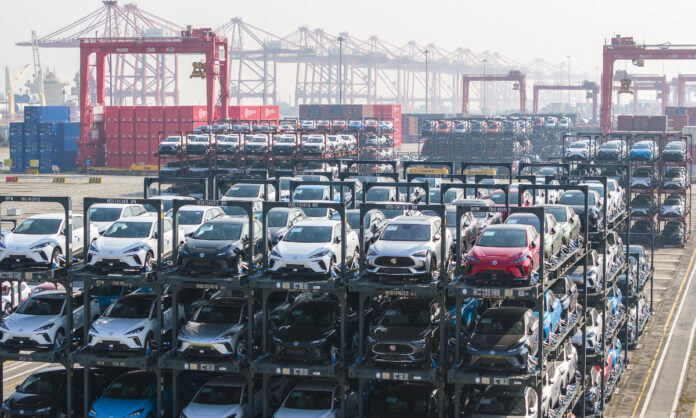BEIJING: China’s foreign trade grew 0.2 percent year-on-year to 41.76 trillion yuan ($5.87 trillion) in 2023, with December data gearing up expansion at a rate of 2.8 percent in yuan-denominated terms, customs data showed on Friday, a stable growth that adds to an array of positive signs underscoring that the world’s second-largest economy is consolidating the recovery momentum despite multiple sources of pressure.
While the full-year reading was a slowdown compared with previous years, officials said it was still a “hard-won” achievement. The data provides a comprehensive picture of how China’s trade juggernaut has overcome hardships – from feeble overseas demand and rising geopolitical tensions to a US-led blockade – throughout the year, and managed to quickly roar back from the downturn in the third quarter with gritted teeth and top-down endeavors.
It also gave the global market more confidence in China’s rosy trade outlook for 2024, as stable data from last year highlighted that new export drivers, led by high-tech and new energy, have been making a foothold, and that Chinese traders’ decisive efforts to diversify export destinations are panning out successfully. Some industry observers anticipate China’s trade growth to bounce back to 5 percent to 6 percent this year.
On the back of the stable trade, the country’s GDP will land in a range between 5 percent to 5.2 percent in 2023, and hit 5.3 percent to 5.5 percent this year, Chinese economists predicted. Defying Western doomsayers, China is poised to continue maintaining its position as the world’s top trading nation for seven consecutive years and its role in the global supply chain will further ascend to unparalleled heights, making it an irreplaceable backbone of the global economy, they noted.
China’s exports gained 0.6 percent in yuan-denominated terms in 2023, while imports dropped 0.3 percent last year, customs data showed.
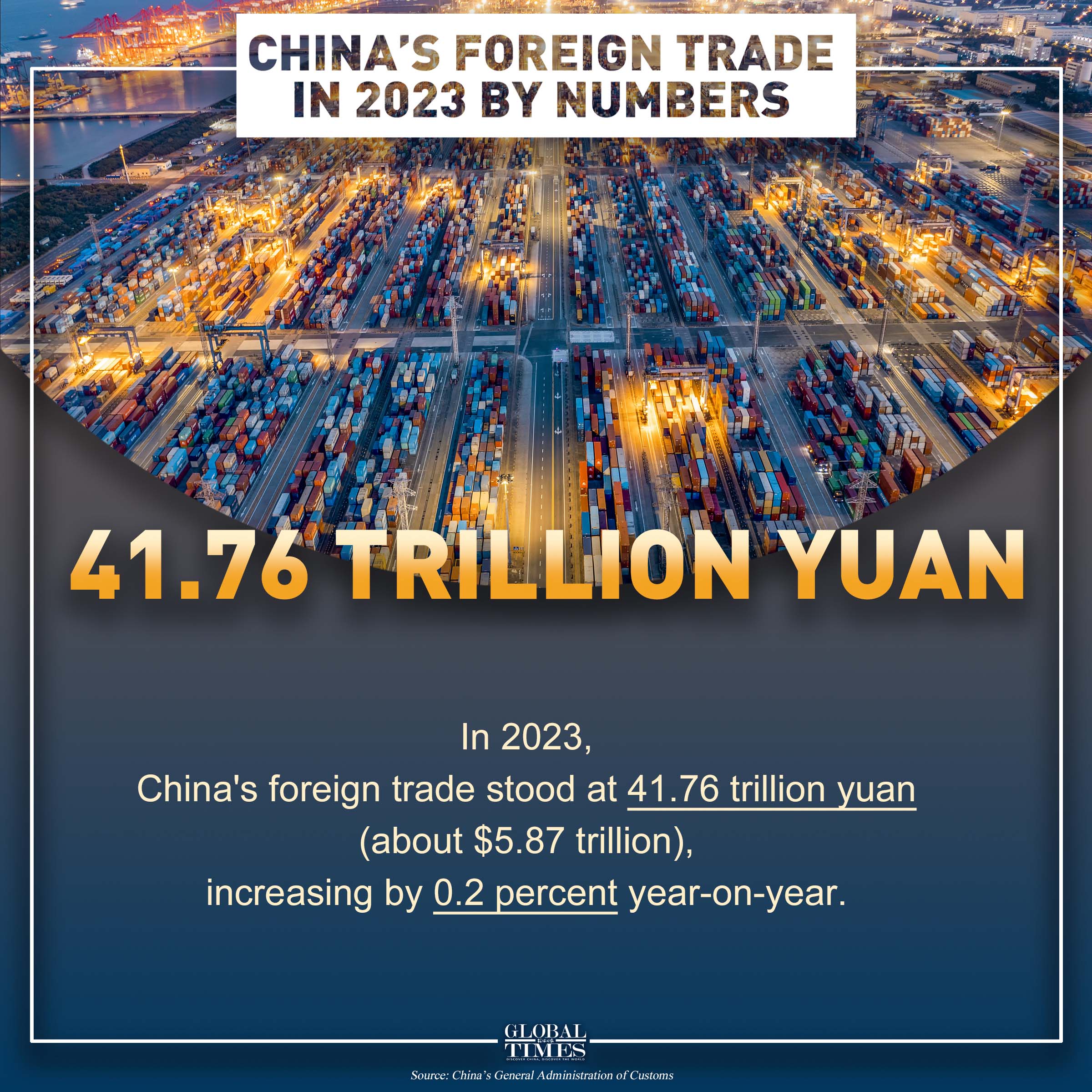
Chinese officials said the solid trade data in 2023 was a “hard-won” achievement in the face of stiff headwinds.
Lü Daliang, a spokesperson with the General Administration of Customs, said at the press conference of the State Council Information Office on Friday that from the reading, export growth has indeed slowed down compared to previous years, partly due to the direct impact of meager external demand.
“But we should know that China’s exports have reached a new high on a high base, not only achieving reasonable growth in volume, but also maintaining overall stability in share,” he said. Lü further interpreted that in 2023, China’s share of exports remained stable, meaning that the “cake” has not become smaller, and that overall competitiveness remains stable.
“What we faced is worldwide inflation, and the shockwaves have spread universally and evenly in global markets. So growth in positive territory is in itself a good performance compared with other major trading powers,” Bai Ming, a research fellow at the Chinese Academy of International Trade and Economic Cooperation, told the Global Times on Friday.
Observers cited the example of Vietnam, which is seen as a rising Asian manufacturing hub that competes with China in certain fields. In 2023, the Southeast Asian economy posted a steep trade drop of 6.6 percent in dollar-denominated terms, the Xinhua News Agency reported, citing official data.
In addition to sluggish demand, the complicated geopolitical landscape and US-led supply chain decoupling push also weighed substantially on China’s foreign trade, according to Chinese trade representatives, resulting in deep slumps in trade volume with the US market last year and more efforts in seeking substitutes.
“It is worth noting that South Korea, as well as other emerging markets in Southeast Asia and Belt and Road Initiative (BRI) partner countries led the trade growth of our firm last year, which helped cushion against the drop in US exports,” Zhu Qiucheng, CEO of Ningbo New Oriental Electric Industrial Development, an exporter of pet furniture and home furnishing products, told the Global Times on Friday.
Zhu is among the country’s 600,000 foreign trade business entities who believe that there’s no obstacle they cannot overcome with a hard-working spirit, a proactive strategy for adapting to an ever-evolving situation and concrete government support. Believing that “the dog days are over”, Zhu, said he plans to invest more in those emerging markets in 2024, where “market opportunities abound.”
Customs data also reflects a similar pattern shift.
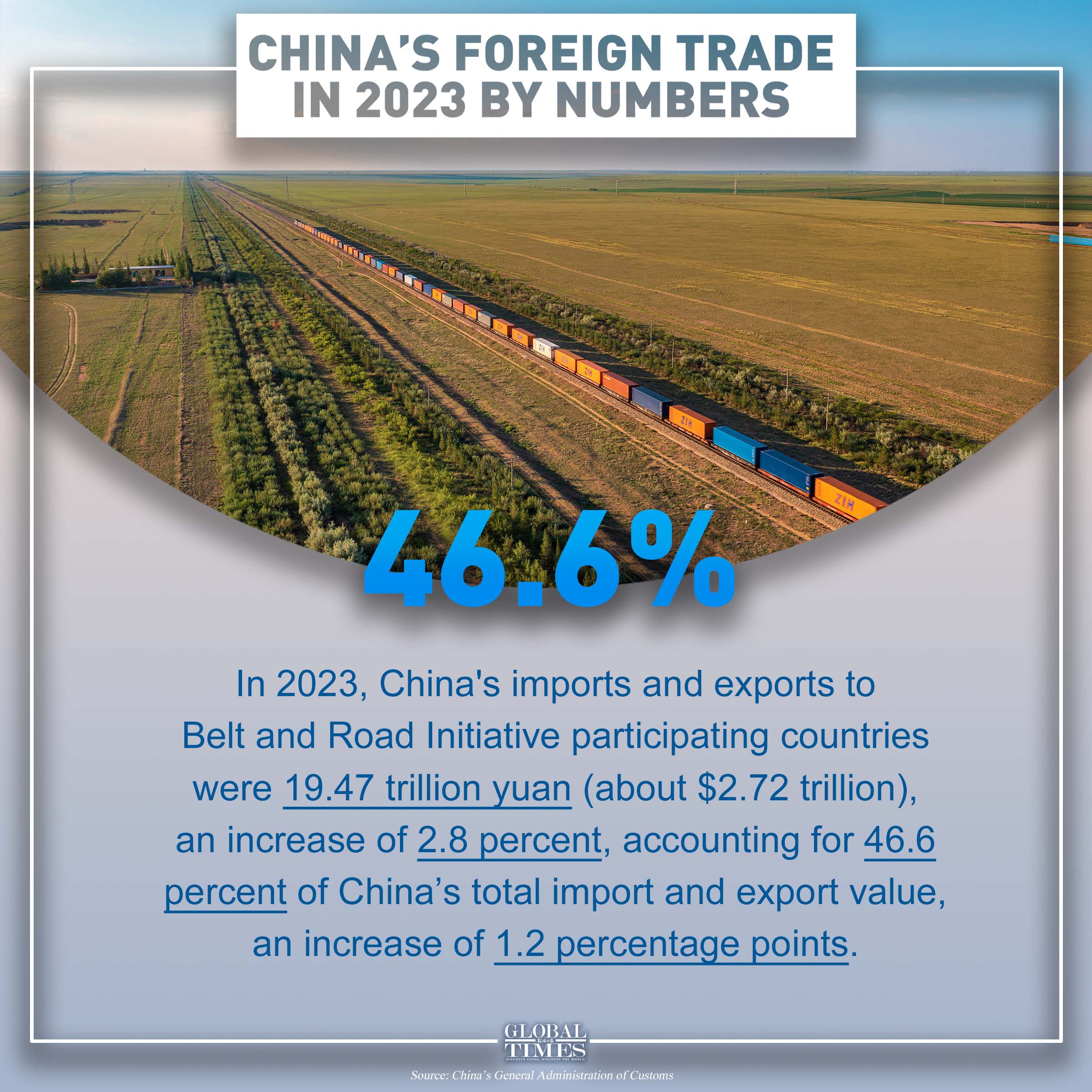
Cao Heping, an economist at Peking University, told the Global Times on Friday that the dive should be attributed to Washington’s stepped-up decoupling alliance approach targeting China since the second half, especially in chips and other high-tech industries.
In 2023, the value of China’s integrated circuit imports plunged 10.6 percent year-on-year, customs data showed.
“It is ironic that the US is attempting to expand exports to China, yet its politicizing scheme is the culprit behind its widening trade deficit with China,” Tian Yun, a veteran economist based in Beijing, told the Global Times on Friday.
Cao nevertheless stressed that as it usually takes three to six months to build up a new supply chain, the pick-up of China’s trade in the fourth quarter also underscored that the country’s resilient economic engines have already regained their indigenous vigor.
In December, foreign trade jumped 2.8 percent year-on-year to 3.81 trillion yuan, reaching a monthly historical high. Customs data showed that China’s foreign trade slumped slightly at 0.2 percent in the first three quarters.
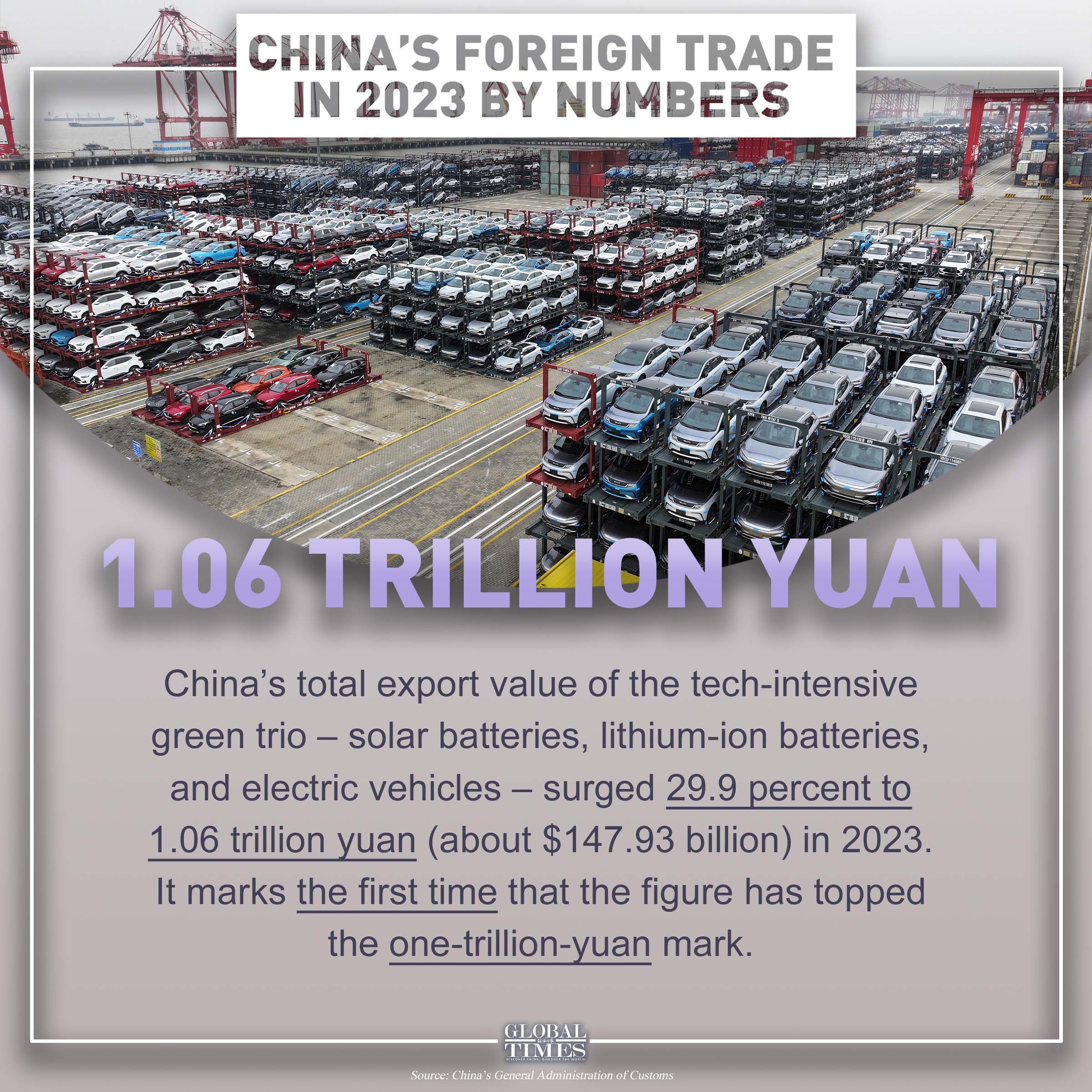
In 2023, China’s exports of “the new three,” namely EV, lithium-ion batteries and solar cells, hit the 1-trillion-yuan mark for the first time, growing 29.9 percent year-on-year to 1.06 trillion yuan last year, according to the data shared at the press conference on Friday.
Chinese officials said that the drivers of China’s exports remained diverse and robust in 2023, and exports have shown the strong resilience and comprehensive competitiveness.
“It is a milestone moment, as China has arguably given away its cost advantage in certain labor-intensive manufacturing industries… It shows that an overall structural upgrade is taking shape in foreign trade, and the country is now running on abundant innovative drives,” Cao said, adding that high-tech exports are set to propel trade machines more this year.
Freshly-released data from the Association of Automobile Manufacturers hinted that China could overtake Japan to become the world’s biggest car exporter in 2023. China’s total auto exports hit 4.91 million, up a whopping 58 percent year-on-year, data showed.
A gradual warm-up in global demand is also likely to give the country a leg up, and it is predicted that China’s foreign trade will expand 5 percent to 6 percent this year, according to Cao.
Multiple signs have indicated a good opening for China’s foreign trade in 2024, fueling widespread optimism on the economy. Zhu said his company is getting a head start, with orders flowing in and factories operating at full throttle in January. “Foreign orders have recovered faster than expected since December, and we’re fully booked until March,” Zhu said.
Looking ahead, the favorable conditions for China to develop foreign trade outweigh the adverse factors in 2024, Wang Lingjun, Vice Minister of the General Administration of Customs of China, said at the press briefing.
Wang added that despite the rise of protectionism, intensifying geopolitical conflicts and impact of the Red Sea crisis, China’s economy is resilient, with great potential and vitality. It also has the socialist system advantage, the sheer size of its domestic market, and strong production capacity.
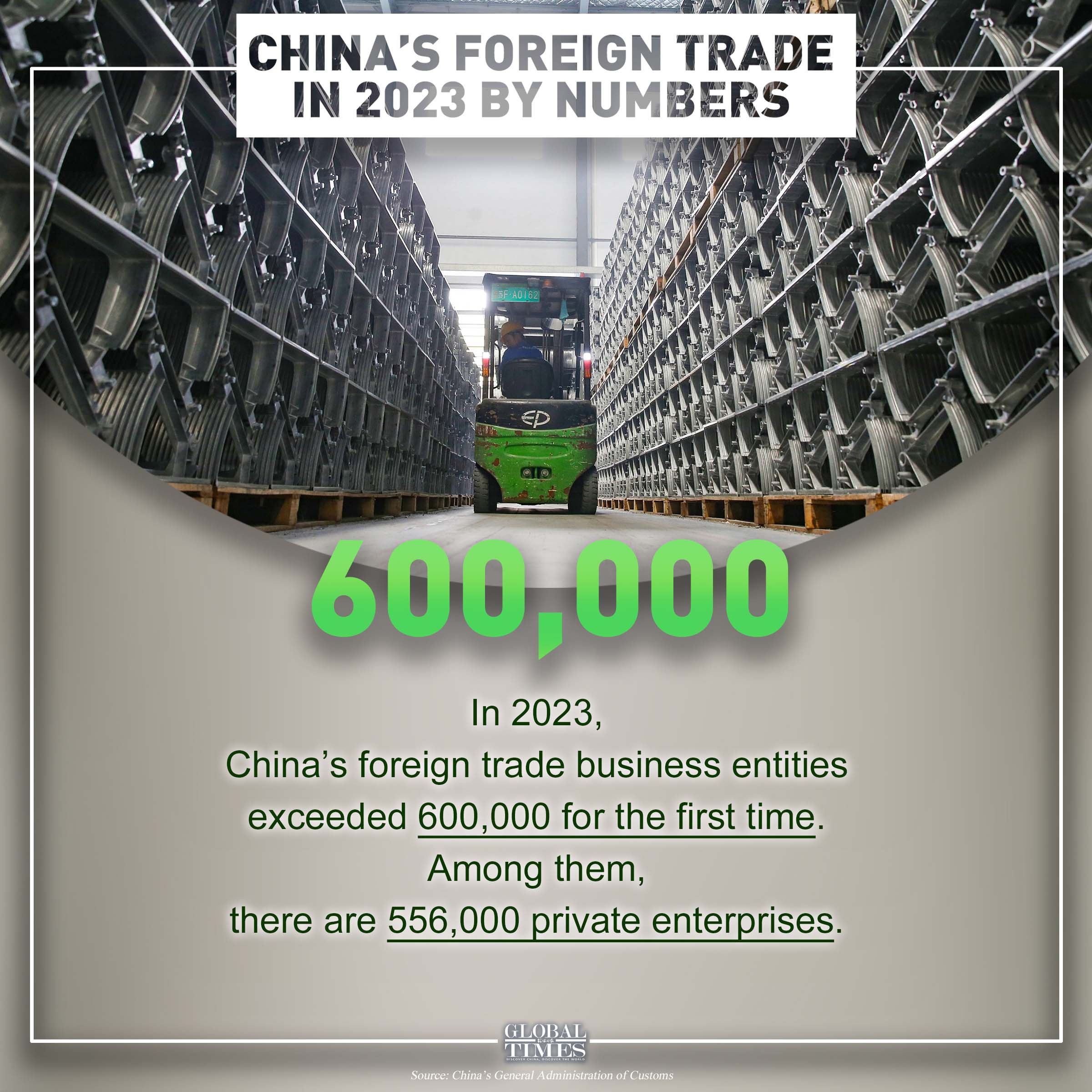
China is widely expected to reach its annual growth target of around 5 percent this year. The IMF, for example, projected China’s GDP growth to reach 5.4 percent in 2023, citing strong household consumption as one of the reasons.
“It is foreseeable that China will continue serving as a stabilizer to the global supply chain in 2024, and its position as the world’s largest trading nation will be further cemented. While supplying high-quality and high value-added products to the world, China’s ever-expanding consumption market will also make greater contributions to the world economy,” Tian stressed.
China published its 2024 tariff adjustment plan in early January. The Foreign Ministry said on Friday that the move shows China, as a responsible major power, is willing to share its development dividends with the world.
Economists projected an around-5 percent China GDP growth in 2024. The country will release the 2023 GDP data on January 17 and set its annual GDP target during the “two sessions” in March.



















